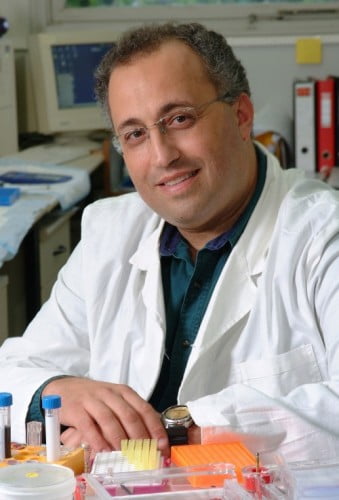The famous tale of the Trojan Horse is one where strategic planning beat out the power of the sword. The Greek’s victory over the Trojans demonstrates how knowing your enemy well is key to securing the most effective victory.
One of the reasons why chemotherapy treatments are difficult is because cancer cells are equipped with sophisticated defense mechanisms on their membranes that resist contact from anticancer drugs.
Dr. Yehuda Assaraf, the Dean of the Faculty of Biology at the Technion, Israel’s Institute of Technology, studied the complexities of this mechanism to develop a novel therapy strategy he calls the “Pharmacological Trojan Horse”. This innovative new technology, registered as an American patent, has stirred a great deal of interest among major international pharmaceutical companies for its potential solution of removing a major obstacle to the development of curative cancer treatments.
Relates Stories:
- Israeli Doc Teaches Dogs To Sniff Out Cancer
- The Israeli Blind Mole Rat May Hold The Key To Curing Cancer
Beating drug-resistant cancer cells at their own game
The ability for cancer cells to defend against and overcome chemotherapy is known as “multidrug resistance” (MDR). As Assaraf explains “[MDR] often stems from the fact that cancer cells possess an abundance of pump proteins, located in the membrane of cancer cells, that act as efficient pumps which expel a multitude of anticancer drugs from the cancer cells.” However, should some of the enzymes from the anticancer drug surpass this first line of defense, a multiplication of something called “lysosomes” within the cancer cell will immediately break down what it identifies as a foreign contaminant in order to safeguard its survival. These two types of MDR is the main reason malignant tumors continue to be so immune to chemotherapy.
Assaraf and his team of researchers, including Dr. Michael Stark, Dr. Eran Bram, and Yamit Adar, focused in on this MDR phenomena with the hopes of beating drug-resistant cancer cells at their own game. They identified the weakest point where these cells could be defeated as the “Achilles’ Heel”. “When we illuminated light upon the MDR cells containing very light-sensitive drugs trapped in the lysosomes, it created oxygen free radicals that destroyed the lysosome membrane and as a result, all of the contents of the lysosomes was spilled into the cancerous cell. This resulted in a massive release of the enzymes, and rapid digestion and destruction of MDR cancer cells,” according to Assaraf.
In collaboration with other researchers such as Professor Griffioen, Dr. Nowak-Sliwinska, Professor van den Bergh, Professor Skladanowski, and Professor Sarna from Holland, Switzerland and Poland, live experiment models with resistant tumors of human ovarian cancer origin confirmed that the tumor core was successfully destroyed upon light exposure, having accumulated vast amounts of anticancer drugs inside the lysosomes. Moreover, the presence of the oxygen free radicals after light exposure cut off the blood vessels which the tumor depended on for nourishment, making it possible to destroy any malignant cancer cells that remained.
“Pharmaceutical Trojan Horse”
Currently, Assaraf and his team of researchers are working on a second generation of the “Pharmaceutical Trojan Horse” that selectively and solely targets protein receptors on malignant cells. Additionally, the team is also working on an alternative version of the “Pharmaceutical Trojan Horse” that targets any cancerous tissue or metastasis of cancerous cells in a patient’s body via activation by ultrasonic waves, lending for a less pervasive procedure.
Even though Assaraf emphasized that the “Pharmaceutical Trojan Horse” is still a long way away from being a practical treatment for malignant tumors within human patients, Assaraf and his team’s potential therapeutic approach received wide coverage in a “Spotlight of Cell Press” article and was recently published in the journal “Cell Death and Disease”. For his groundbreaking research achievement, Assaraf will be awarded the Hilda and Hershel Rich Innovation and Entrepreneurship award on June 2014.
Related posts

Israeli Medical Technologies That Could Change The World

Harnessing Our Own Bodies For Side Effect-Free Weight Loss

Missing Protein Could Unlock Treatment For Aggressive Lung Cancer





Facebook comments